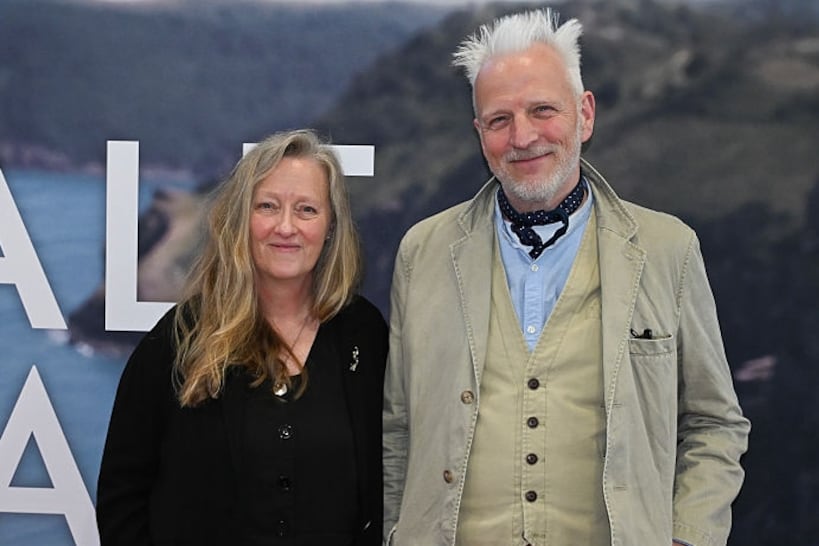A chicken-and-egg problem lies at the heart of policy on private car use — should people continue to drive as other more sustainable options are improved, or ditch their cars to make space for other options?
“It’s the least efficient way to get people around cities,” says David O’Connor, an expert in transport planning at Technological University Dublin who is broadly supportive of Minister for Transport Eamon Ryan’s mission to reduce car use. At the same time, he believes the debate ought not to be about getting rid of cars but reducing dependency.
Recent modelling published by the National Transport Authority (NTA), on which Ryan will partially base his memo to be discussed at Cabinet on Tuesday, suggests a range of measures to curb journeys — car-free urban spaces, parking constraints, improved and cheaper public transport, an increase in fuel costs, and €10 congestion charges.
‘You need to free up space for that public transport to work effectively … There is no use in investing all that money and then finding that they are stuck in congestion’
— Brendan O'Brien of Dublin City Council traffic division
“There is a lot of focus on the cost of the congestion charge but it’s about making the public transport service reliable,” O’Connor says of the disincentive model. “You have to have a congestion-free network.”
READ MORE
The construction of high-quality roads during the Celtic Tiger era facilitated longer commuter journeys. While improving public transport will be key to getting people to stop using them, such a shift in culture and behaviour would, according to O’Connor, prove to be universally beneficial.
The NTA document, originally published in January, includes a number of specific modelling options. Individual journeys and related emissions would likely be reduced, it says, in the face of 400 per cent increases in 2016 level urban parking charges, the scrapping of free work spaces and a halving of public transport fares.
Dublin City has seen versions of such policies already take effect. According to Brendan O’Brien, who oversees the city council’s traffic division, inward private car journeys have fallen by between 40 and 50 per cent since the early 2000s. The capital’s recently adopted development plan aims to go further still, cutting private vehicle use (including motorcycles) from 29 per cent of road use to 17 per cent by 2028, while simultaneously pushing walking, cycling and public transport from 71 to 83 per cent.
“You need to free up space for that public transport to work effectively,” says O’Brien. “There is no use in investing all that money and then finding that they are stuck in congestion.”
On Monday, as news emerged of Ryan’s intent to zero in on private cars as part of a broader sustainable transport agenda, the Automobile Association (AA) called on the Government to introduce limited free public transport and shared bike trials “before announcing any further penalties to motorists”.
Fuels for Ireland, the umbrella organisation, said a hike in fuel prices would simply put further financial strain on consumers without cutting demand.
‘We have to get cars out of the system in order for public transport to work better. We have to get better walking and cycling facilities in’
— Dr Lorraine D’Arcy, lecturer in sustainable transport and mobility at TU Dublin
Speaking on RTE, Dr Brian Caulfield, associate professor of engineering at Trinity College Dublin, noted that before introducing a congestion charge, Stockholm “did a blitz” on public transport capacity. “If we were to introduce this charge in the morning, which is not what’s been suggested, we wouldn’t have the capacity in our public transport network to carry the numbers of people that would need to use it,” he said.
But which measures should come first?
Dr Lorraine D’Arcy, senior lecturer in sustainable transport and mobility at TU Dublin, believes the solution, in part, lies in an equitable division of road space for all users, not in a congestion charge that would allow those with means to continue an increasingly outdated reliance on unnecessary journeys.
She identified a need, too, to move away from the type of suburban planning that has existed since the 1970s when it was assumed every household would have access to a private car, a phenomenon of “carchitecture”.
Returning to an older form of planning not so reliant on cars for short journeys is as important in small rural areas as in cities.
“We have to get cars out of the system in order for public transport to work better. We have to get better walking and cycling facilities in,” she says. “Change needs to happen and that can be incremental change.”










